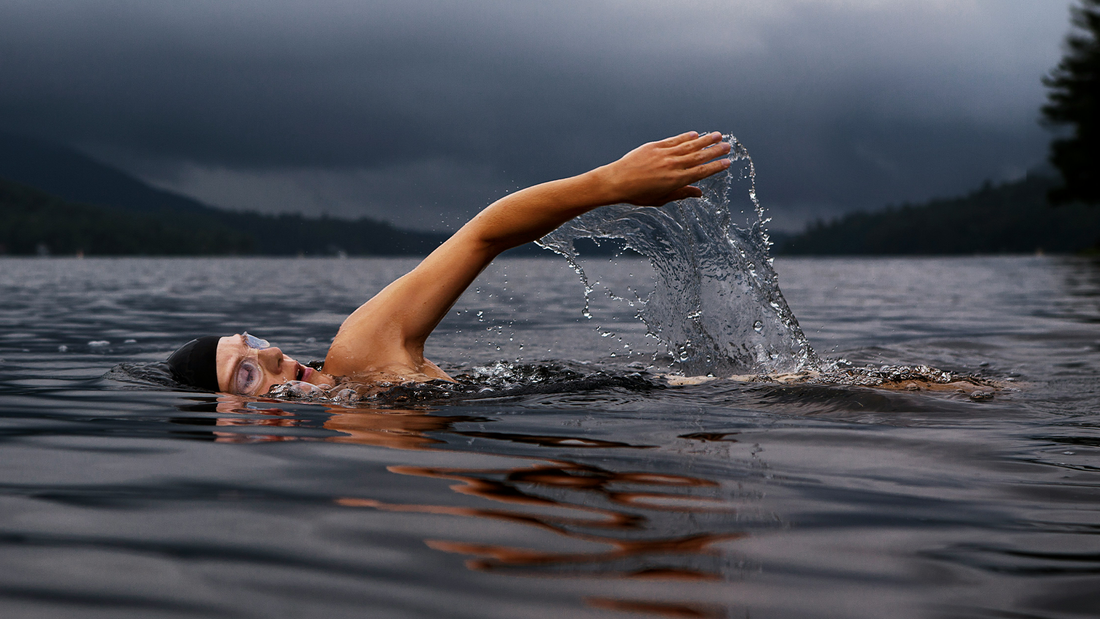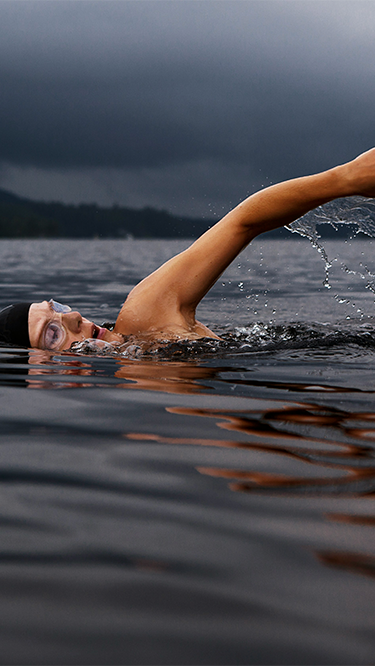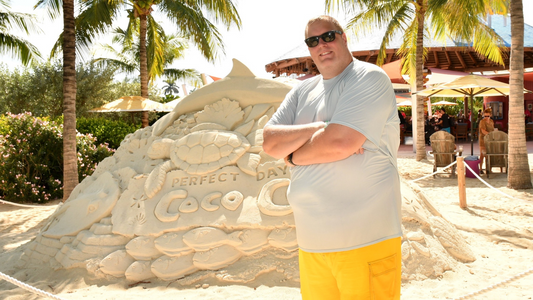

Beginner Plan for Swimming Workouts
Ready to incorporate something new into your fitness routine? Or looking for a low impact alternative as you recover from injury? Getting started with swimming is one of the best things you can do for your overall health and wellness. As a low impact activity, this is accessible no matter where you are in your fitness journey.
Swimming isn’t just paddling around in the pool. Swimming as a workout incorporates drills and other activities to not only improve your swimming, but also bolsters your aerobic capacity, strengthens muscles, and relieves stress.
Getting started with swimming, however, may feel daunting. Unless you were on a swim team in high school or already compete in swim or multisport events, it is unlikely that you’ve come into contact with swimming as a sport. You may not know where to start in developing a training plan that incorporates swimming.
What You Need For Your Swim Workout
Before jumping in the pool, make sure you have the appropriate equipment. While not all of these are necessities, some may greatly improve not just your swim ability, but your enjoyment and comfort during the workout itself.
Of course, the most important thing for your workout is access to a pool. While open water swimming is an option, we don’t recommend it for beginners. Also, swimming in a pool makes it easier to keep track of your distance.
The Necessities
Athletic Swimwear. Especially for women, athletic swimwear is a must. Swimwear specialized for sport will be more aerodynamic and have a longer “life” in the pool.
Goggles. Even if you don’t normally bop around the pool with goggles on, you will want to be able to see the lane lines and the pool walls when lap swimming. If you wear corrective lenses, try out a pair of prescription goggles to make life a little bit easier.
Swim Cap. The swim cap isn’t to keep your hair dry. Instead, the cap contributes to aerodynamics and lets you glide through the water for an effortless swim.
Optional Equipment
Pull Buoy/Leg Float. When you’re just starting out a pull buoy will make your swimming journey easier. You put the buoy between your thighs so your legs float, putting your body in the proper swim form. This allows you to really work on your stroke and build muscle in your arms.
Kickboard. As the name implies, this will help you with your kick! It is great if you are working on your form to become a better swimmer.
Paddles and Flippers. Using paddles and flippers in the pool will assist you with improving your form. Swimming with hand paddles improves your stroke while flippers work with your kick.
Planning a Swim Workout for Beginners
Building a swim workout is all about finding the right combination of drills. There are a lot of options depending on what you want to work on and what you hope to get out of your workout session.
When you start swimming for fitness, a 20-30 minute session in the pool will be long enough. Instead of prioritizing one long swimming session per week, it’s better to swim 3-4 30 minute sessions.
Regardless of what you decide for your workout, warming up is a must. A good warm-up for a beginner fitness swimmer is 1-2 laps of the pool.
Interval Workouts
One of the best workouts for beginners is to do swimming intervals. Interval training is great because it gets your blood pumping and allows you to work on speed and power.
For a beginner, a good interval workout is swimming 50 yards and then taking a 30-second rest. Repeat this at least 5-7 times. Throughout the interval pay attention to when you start to feel fatigued and find focus and keep correct form.
As you improve, you can increase the distance of the interval (swimming 75 or 100 yards) or you can decrease your rest time. Either option will challenge you and your swimming ability.
Swimming Drills
Swimming drills are skillbuilding sessions focused on making you a more efficient swimmer. For swimming drills, using the optional equipment above becomes a necessity. Often these tools make swimming easier, but will help you correct your form and move faster in the water.
To make the most out of swimming drills to improve your swimming efficiency, we recommend swimming 50 yards with equipment and then 50 without the equipment. This allows you to see and, more importantly, feel the difference. Once you understand the difference between your form using equipment and your form without equipment, you’ll be able to make changes.
For example, you might swim 50 yards with the pull buoy and then 50 yards without the pull buoy. Since the pull buoy floats your legs for you, when swimming without the pull buoy pay attention to the positioning of your lower body. Are your legs sinking? How can you adjust your body position to keep your lower body aligned with your upper body.
Endurance Workouts
During an endurance swimming workout, your goal is to build aerobic capacity and challenge yourself by going a longer distance. As you continue with your swimming workouts, you should increase your ability to swim for a longer period of time.
Keep track of your longest distances during your workouts and aim to push at least 50 yards more than your prior longest swim distance. Long endurance-building swim sessions burn a lot of calories and fat because your body is working hard to keep you moving — and breathing.
Never deny yourself a break if you need it, but always try to get a little bit outside of your comfort zone.
Building Swimming into an Existing Fitness Plan
If you are already exercising and want to add swimming to your existing fitness plan, consider swim days cross-training for endurance work or a workout to put in between heavy strength training days.
Like with all new workouts, understand that there will be a trial period as you get used to incorporating swimming into your fitness plan. Even if there is an adjustment period, the massive benefits of swimming for exercise will be beneficial to your overall fitness in the long run.
As you continue your swimming workouts, be sure to use the ZOZOFIT app to track how these exercises are impacting your shape. You can scan your body in 3D with your smartphone, track your body fat percentage, set goals, assess your glutes with our Booty Mode, and more.

![zf-w-[168px] zf-h-[40px]](http://zozofit.com/cdn/shop/t/15/assets/logo-desktop.png?v=117713855448369080381753069598)



